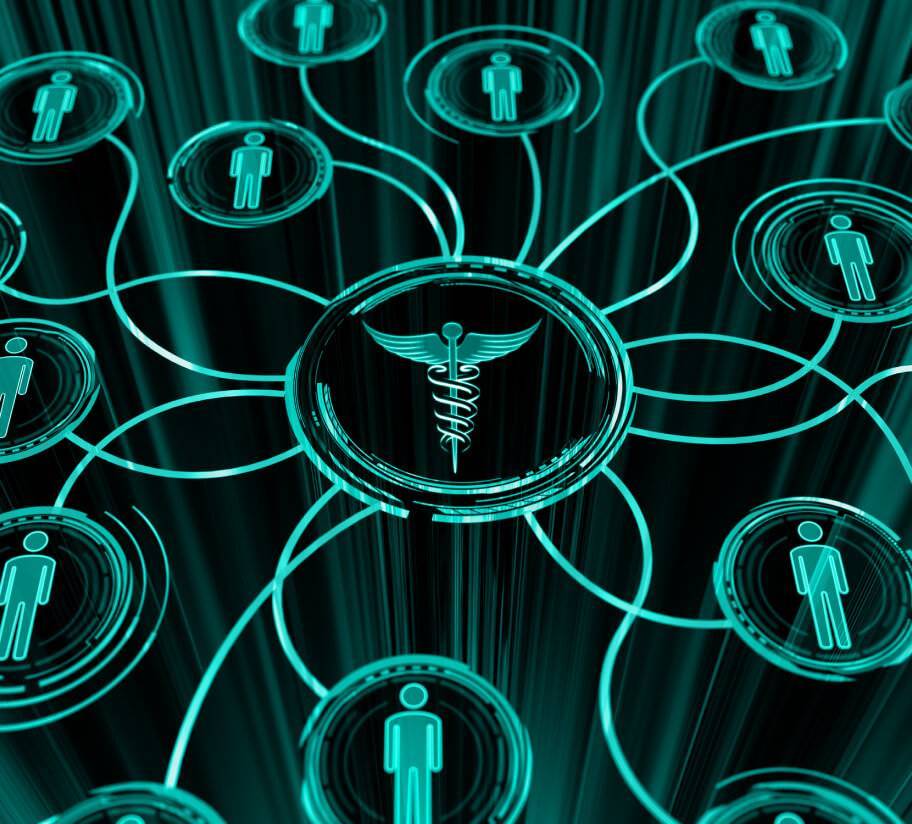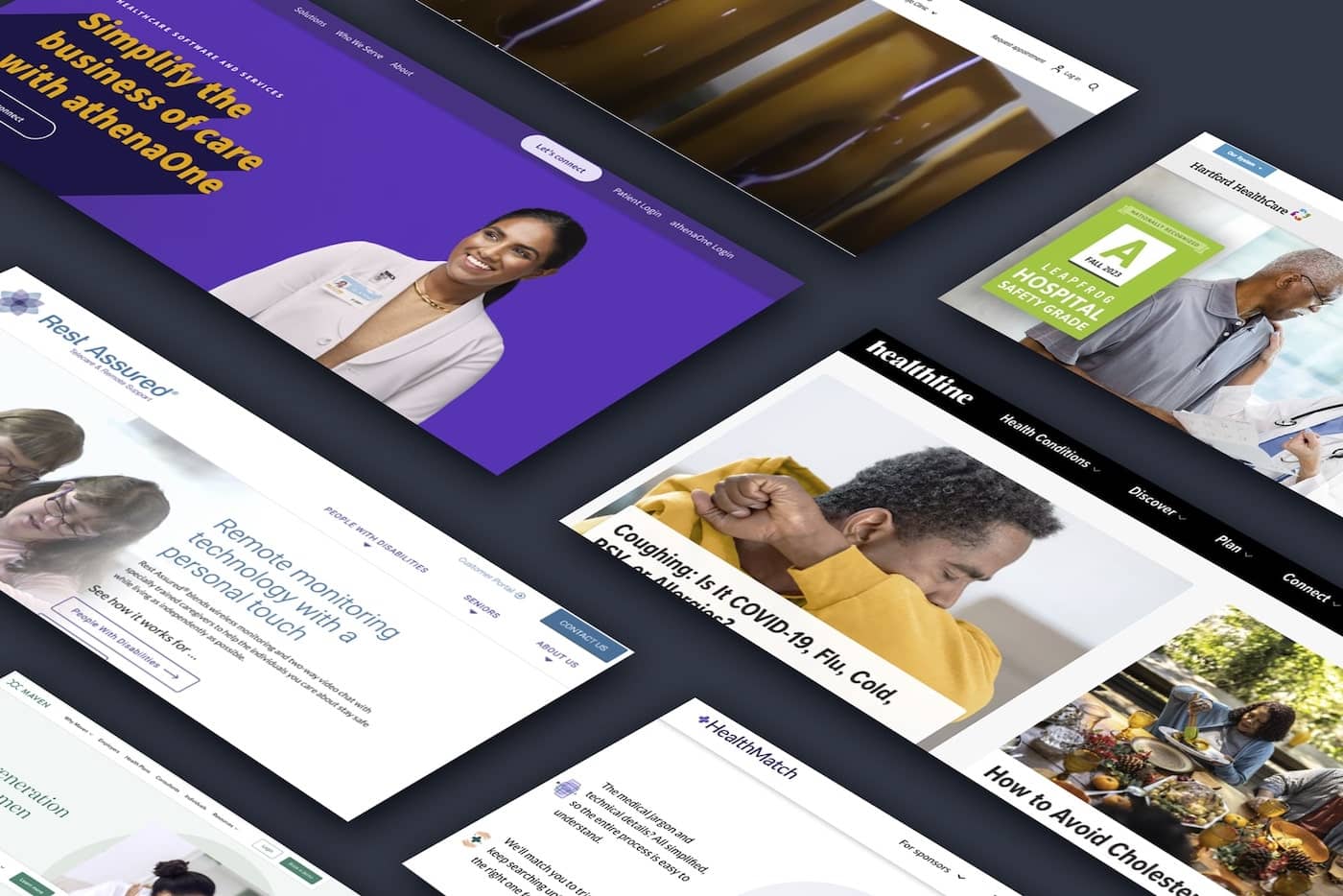

10 Reasons Healthcare Companies Need Intranets
In the dynamic and increasingly complex landscape of healthcare services, intranets have become indispensable tools for managers, staff, vendors, patients, and visitors. Integrating multiple tools into these digital platforms supports effective communication, collaboration, and centralized information sharing, enhancing healthcare operations.
As healthcare organizations merge and grow, they must support deskless and remote employees as easily as office-tethered workers. Additionally, the need for privacy and security within healthcare systems cannot be overstated.
Healthcare intranets, often built on robust platforms like SharePoint, integrate seamlessly with Microsoft's suite of digital tools, providing a comprehensive solution fortified with granular permission controls. This ensures the confidentiality of sensitive patient data and aligns with HIPAA compliance requirements.
This article touches on the primary uses and benefits of healthcare intranets.
10 Ways Intranets Support Healthcare Businesses
Improved Communication and Collaboration

An intranet offers various communication channels, including forums and secure messaging.
Healthcare intranets help improve communication by providing a unified platform for healthcare professionals to connect.
Through secure messaging, forums, and discussion boards, intranets foster real-time collaboration, breaking down communication barriers to enhance the efficiency of healthcare teams.
The result is a more coordinated and responsive healthcare system.
Streamlined Patient Care

A healthcare intranet has medical resources and connections to other healthcare providers.
Healthcare intranets streamline patient care with centralized patient information for doctors, nurses, and medical technicians.
This centralized hub ensures that healthcare professionals have quick and secure access to patient records, facilitating faster decision-making, accurate diagnoses, and coordinated treatment plans.
Intranets contribute significantly to elevating the quality of patient care by minimizing delays and reducing the risk of errors by minimizing delays and reducing the risk of errors.
Scheduling and Staff Management
Staff and managers can easily access and update schedules.
Healthcare intranets support scheduling and staff management. These platforms support the complex process of coordinating healthcare professionals' schedules, especially when struggling to meet staffing shortages.
With intuitive interfaces, staff can easily access and update schedules, facilitating real-time visibility into staffing resources. Automated scheduling features help administrators create balanced rosters, considering factors like skill sets and workload distribution. Additionally, these platforms often integrate with HR systems, simplifying staff onboarding, training tracking, and performance evaluations.
Integration with public-facing websites

Intranets with health information can connect to websites where patients can view medical records securely.
The integration of healthcare intranets with public-facing websites enhances the patient experience. By providing features like online appointment scheduling, prescription refills, and educational resources, healthcare organizations bridge the gap between providers and patients.
This integration improves accessibility for patients and contributes to the overall efficiency of healthcare services, fostering a patient-centric approach.
The integration of healthcare intranets with public-facing websites goes beyond improving patient experience. It extends to collaborating with external partners, creating a collaborative ecosystem where healthcare providers can work with external stakeholders.
Also, healthcare intranets facilitate efficient file sharing, allowing secure exchange of critical documents and information between healthcare organizations, patients, or external partners.
Public-facing pages become a source of patient information and collaborative space where healthcare entities can share insights, research findings, and best practices with external partners.
Help Desk Access for Staff and Patients

Intranets streamline submitting support request tickets for IT or medical equipment problems.
Healthcare intranets simplify problem-solving for hospital staff or patients through centralized help desk access. This feature simplifies communication, allowing users to report issues, seek assistance, and obtain information efficiently.
By providing a user-friendly interface and quick problem resolution, intranet-based help desks enhance overall user satisfaction among healthcare staff and patients.
Third-party helpdesk platforms like Zendesk can be integrated with healthcare intranets. And, intranets built on the SharePoint platform can easily integrate with Copilot, Microsoft’s artificial intelligence platform.
Efficient Information Sharing and Management
Files and folders network
Healthcare intranets serve as centralized hubs for efficient information sharing and management. By consolidating data in a secure digital environment, healthcare professionals can access, update, and share information. This reduces reliance on paper-based systems, minimizing errors and ensuring that healthcare teams have real-time access to the most current data. This contributes to an agile and responsive healthcare system. Features like version control and document tracking optimize information management.
Additionally, these platforms act as repositories for invaluable institutional knowledge, ensuring that healthcare professionals have a comprehensive and easily accessible resource.
Content and asset management features empower healthcare organizations to efficiently organize and distribute essential materials. From medical guidelines to training resources, intranets support a structured approach, enhancing the dissemination of critical information. Version control and document tracking maintain a well-organized and continually evolving knowledge base
Employee Engagement

The healthcare intranet can help foster higher engagement and measure satisfaction.
Healthcare intranets foster employee engagement by providing a digital space that promotes collaboration, communication, and recognition. Features such as employee profiles, internal communication tools, and recognition programs contribute to a positive workplace culture.
Healthcare professionals can connect with colleagues, share insights, and participate in forums, creating a sense of community.
Recognition programs and employee profiles enhance job satisfaction in progressive organizations. The intranet becomes a dynamic platform where staff feels valued, connected, and informed, leading to increased productivity and care quality.
Employees can also access their PTO credits, see pay stubs, download tax forms, and access links to retirement and insurance plans.
Business Services Integrations
Integrating healthcare intranets with various business services enhances operational efficiency in healthcare organizations for tasks such as billing, payroll, and human resources through intranet-based solutions, contributing to time and cost savings.

Medical codes entered into systems on the hospital floor integrate with billing systems.
Business services integrations ensure critical processes align with organizational goals and promote smoother workflows that reduce manual errors. Whether managing financial transactions or human resource functions, integrating intranets with business services ensures that healthcare organizations operate efficiently.
Payroll departments can more easily account for employee work time and PTO tracking.
In addition to consolidating internal processes, healthcare intranets excel in integration with third-party tools. Integration possibilities range from Electronic Health Record (EHR) systems and billing software to appointment scheduling tools.
Intranets built on Microsoft’s SharePoint platform integrate with the company’s productivity tools, including innovative solutions like Copilot. Integrating cutting-edge technologies ensures everyone in the healthcare ecosphere has the right tools for the job.
Risk Management

Healthcare intranets warehouse emergency information for preventing risks and dealing with them as they arise.
Healthcare intranets play a crucial role in risk management by implementing robust security features and compliance tracking. With granular permission controls, access to sensitive patient information is restricted, reducing the risk of data breaches.
Audit trails enable healthcare organizations to monitor and trace data access, ensuring compliance with regulatory standards such as HIPAA. By addressing security concerns and compliance requirements, intranets contribute to risk mitigation, safeguarding patient confidentiality, and maintaining the integrity of healthcare operations.
Healthcare intranets exhibit exceptional versatility in integrating third-party tools optimizing a spectrum of operational facets. This encompasses emergency and crisis management tools for swift response, safety protocol adherence, and management of regulatory compliance requirements such as OSHA standards.
Intranets become comprehensive hubs for all-encompassing healthcare operations. From disaster plans to staying ahead of evolving regulations, healthcare organizations that leverage the potential of intranets are equipped to navigate complexities, ensuring resilient and adaptable operational frameworks.
Remote Accessibility for Enhanced Flexibility

Intranets offer medical professionals access to information at any location.
Employees can access the healthcare intranet in the office, at home, and from a phone or tablet while on the move.
This ensures accessibility beyond the confines of the healthcare facility, enabling healthcare professionals to stay connected and engaged regardless of their location.
Whether accessing patient records, participating in collaborative discussions, or keeping updated on critical information, remote accessibility fosters flexibility and ensures the healthcare workforce remains connected and productive.
This capability is valuable in situations like telemedicine, where healthcare professionals may need to consult and collaborate from various locations, contributing to a responsive healthcare system.
Healthcare Intranets at the Heart of Connectivity and Productivity
Healthcare intranets have emerged as indispensable tools, revolutionizing communication, collaboration, and information management in the dynamic healthcare landscape. These platforms enhance operational efficiency, from optimizing patient care to fortifying security.
However, it's crucial to note that while healthcare intranets are powerful tools, they complement rather than replace the need for a solid cultural foundation within healthcare organizations. A robust cultural framework remains fundamental to the success of healthcare operations, ensuring that these technological tools align seamlessly with the values and mission of the healthcare institution.
As healthcare organizations navigate technology and healthcare, embracing the benefits of intranets is key to delivering exceptional patient outcomes and fostering a connected, engaged healthcare workforce.
Contact Us We Can Help You With Our SharePoint Custom Development




